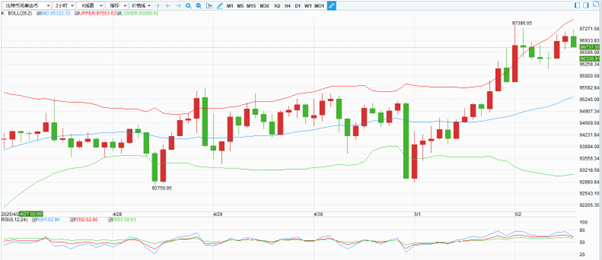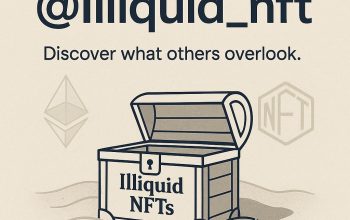The Intersection of Blockchain and Traditional Finance
Imagine a world where financial transactions are seamless, transparent, and secure. A world where traditional banking meets cutting-edge technology, creating a symphony of innovation and efficiency. Welcome to the intersection of blockchain and traditional finance—a landscape that is rapidly transforming the way we think about money, investments, and economic stability.
The Current State of Crypto and Blockchain
The crypto market has been a rollercoaster ride, with Bitcoin and Ethereum leading the pack. As of May 2025, the market is a mix of optimism and caution. Bitcoin, the original cryptocurrency, continues to be the gold standard, reflecting broader economic trends and investor confidence. Its price movements often set the tone for the entire market, making it a crucial indicator for traders and analysts alike.
Ethereum, however, is more than just a cryptocurrency. It is a platform for decentralized applications (dApps) and smart contracts, enabling a plethora of innovative financial solutions. The introduction of Ethereum 2.0 has significantly improved its scalability and security, making it a favorite among developers and investors. This upgrade has paved the way for a more robust and efficient blockchain ecosystem, fostering growth and innovation.
The Rise of Omnichain and DeFi
Omnichain technology is emerging as a game-changer, allowing different blockchain networks to communicate seamlessly. This interoperability is vital for the growth of decentralized finance (DeFi), which aims to create an open, transparent, and accessible financial system. DeFi platforms are disrupting traditional financial services by offering lending, borrowing, and trading services without the need for intermediaries.
One of the most exciting developments in DeFi is the rise of liquidity pools and yield farming. These mechanisms allow users to earn passive income by providing liquidity to decentralized exchanges. However, they also come with risks, such as impermanent loss and smart contract vulnerabilities. Investors need to be well-informed and cautious, understanding the potential rewards and pitfalls before diving in.
The Role of NFTs in the Financial Ecosystem
Non-fungible tokens (NFTs) have burst onto the scene, representing unique digital assets ranging from art and collectibles to real estate and intellectual property. NFTs have opened up new avenues for investment and ownership, allowing creators and investors to monetize digital content in unprecedented ways.
The NFT market has seen explosive growth, with high-profile sales and collaborations making headlines. However, it is not without its challenges. Issues such as copyright infringement, market manipulation, and environmental concerns related to energy consumption have raised questions about the sustainability and ethics of the NFT ecosystem. As the market matures, addressing these issues will be crucial for its long-term success.
Economic Indicators and Market Sentiment
Economic indicators are the compass that guides market sentiment and investment decisions. Nonfarm payrolls, for instance, provide insights into the health of the job market, which in turn affects consumer spending and economic growth. The Federal Reserve’s monetary policy, including interest rates and quantitative easing, also has a significant impact on financial markets.
In May 2025, the economic data suggests a mixed outlook. While some sectors are showing signs of recovery, others are still grappling with the aftermath of recent economic shocks. The tech stocks, in particular, have been volatile, reflecting the uncertainty in the global market. The Nasdaq, a key index for tech stocks, has seen fluctuations, with investors closely watching for signs of a rebound.
The Impact of Global Events on Financial Markets
Global events, such as geopolitical tensions and regulatory changes, can have far-reaching effects on financial markets. For example, the imposition of tariffs by the U.S. government has led to increased costs for businesses and consumers, affecting supply chains and economic growth. Similarly, regulatory developments in the crypto space can either boost or hinder the adoption of blockchain technology.
Investors need to stay informed about these events and their potential impact on their portfolios. Diversification and risk management strategies are essential for navigating the complexities of the current financial landscape. Being proactive and adaptable is key to thriving in an ever-changing market.
The Future of Financial Analysis
As we look to the future, the role of artificial intelligence (AI) and machine learning in financial analysis is becoming increasingly important. AI-driven tools can process vast amounts of data and provide insights that would be impossible for human analysts to achieve. This technology is being integrated into various financial services, from trading algorithms to risk management systems.
The intersection of real-world assets (RWA) and AI is also creating new opportunities. RWA tokenization platforms, for instance, allow for the digitization of physical assets, making them more accessible and liquid. This trend is likely to continue, as more industries explore the potential of blockchain and AI to transform their operations. The future of finance is being reimagined, and AI is at the forefront of this revolution.
Conclusion: Embracing the Future
The convergence of blockchain technology and traditional finance is reshaping the financial landscape in profound ways. From the rise of DeFi and NFTs to the integration of AI and machine learning, the future of finance is being reimagined. As investors and analysts, it is crucial to stay informed and adapt to these changes. The challenges and opportunities that lie ahead will require a blend of innovation, caution, and strategic thinking. Embracing this future means being open to new ideas and technologies, while also being mindful of the risks and uncertainties that come with them. The journey is just beginning, and the possibilities are endless.
The intersection of blockchain and traditional finance is not just a trend; it is a transformation. It is a journey towards a more transparent, efficient, and inclusive financial system. As we navigate this exciting landscape, let us embrace the opportunities and challenges with an open mind and a forward-thinking approach. The future of finance is here, and it is brighter than ever.
—
References




